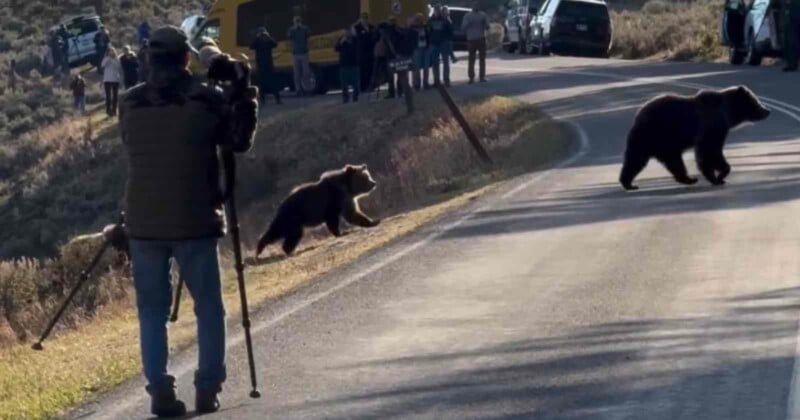This Instagram Filter Tells Photographers When They’re Too Close to Wild Animals

A new Instagram filter warns visitors in the U.S. when they are getting too close to wild animals while taking a photo.
The Jackson Hole Travel & Tourism Board has developed an Instagram filter called “Selfie Control” that helps amateur and professional photographers in Jackson Hole, Wyoming to keep a safe distance while taking pictures of wildlife.
The Jackson Hole Travel & Tourism Board created the Instagram Selfie Control filter as a reminder to visitors that while viewing and taking photos of wildlife is allowed and encouraged, staying the appropriate distance is a requirement.
The Selfie Control filter is preloaded with distance requirements for all the wildlife that is native to Jackson Hole, including bison, bears, and moose.
“For professional photographers and amateurs alike, it’s hard to tell if a moose or bison is 25 or 100 yards away just by ‘eyeballing’ it, especially when you’re in a place like Grand Teton or Yellowstone National Park with sprawling, wide-open spaces,” Erik Dombroski, chair of the Jackson Hole Travel & Tourism Board, says in a press release.
“That’s why we created the Selfie Control filter—so visitors can easily gauge proper distance for their safety, as well as the wildlife they are sharing space with, while still allowing for a memorable shot.”
To use the tool, Jackson Hole visitors need to search for the Selfie Control filter button on Instagram, navigate through the animal options to the type of wildlife they are looking at, and align the animal’s outline to the icon.
If the animal appears bigger than the icon, they are considered too close for safety. Photographers can then move back to the appropriate distance and take pictures of the animal.
More Wildlife Photos, Less Accidents
The Jackson Hole Travel & Tourism Board says it is open-sourcing the Selfie Control filter so that other destinations can deploy it for their wildlife.
“It’s our hope that the filter can allow other wild destinations that are home to wildlife to keep their visitors and wildlife safe as visits are sure to increase during the summer travel season,” said Crista Valentino, executive director of Jackson Hole Travel & Tourism Board, explains.
“We want to see the numbers of stunning wildlife images on the rise and incidents and accidents steeply decline.”
There have been several highly publicized instances of tourists and photographers getting too close to animals in the U.S. In May, a Yellowstone National Park guide filmed a photographer who refused to move away as a grizzly bear and her cubs crossed a highway.
Meanwhile, in March, PetaPixel reported on a photographer who was filmed going nose-to-nose with a bison.
Image credits: Header photo via Instagram/@montanawild.